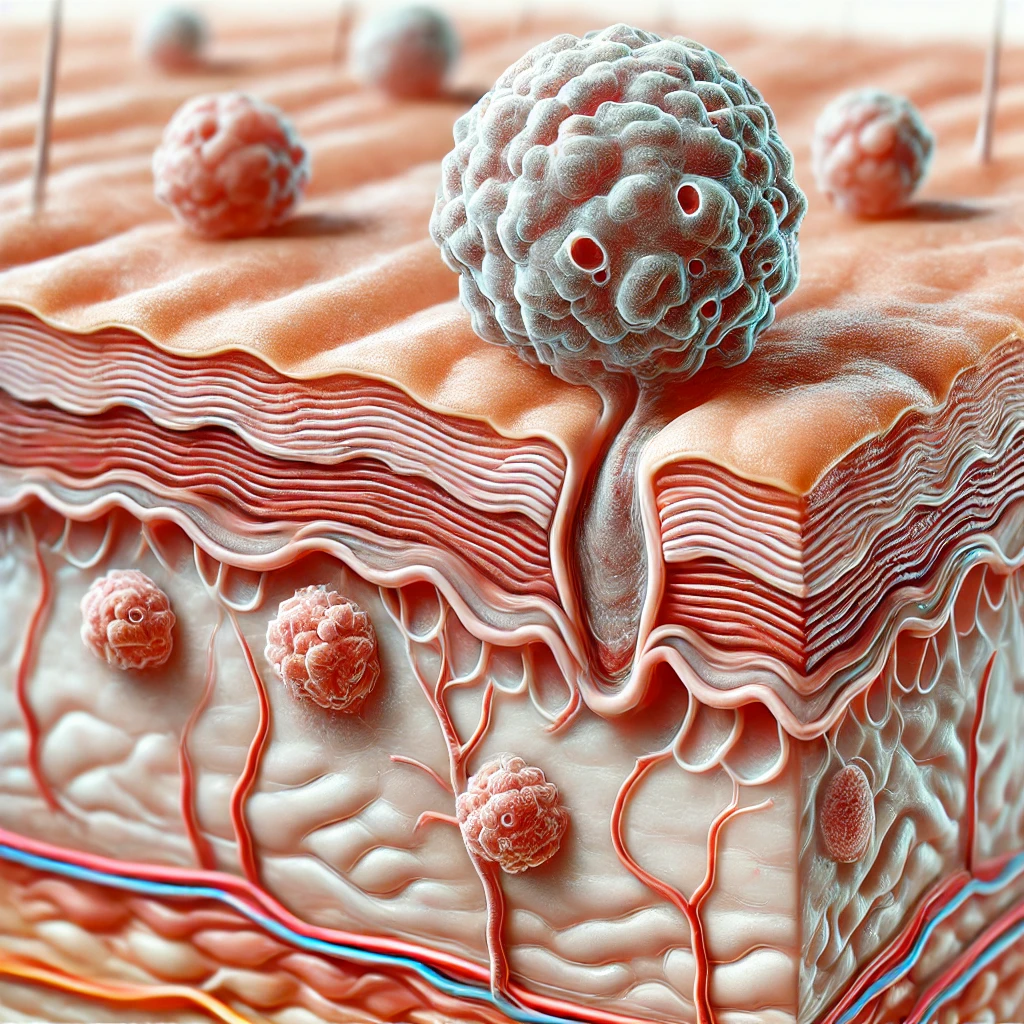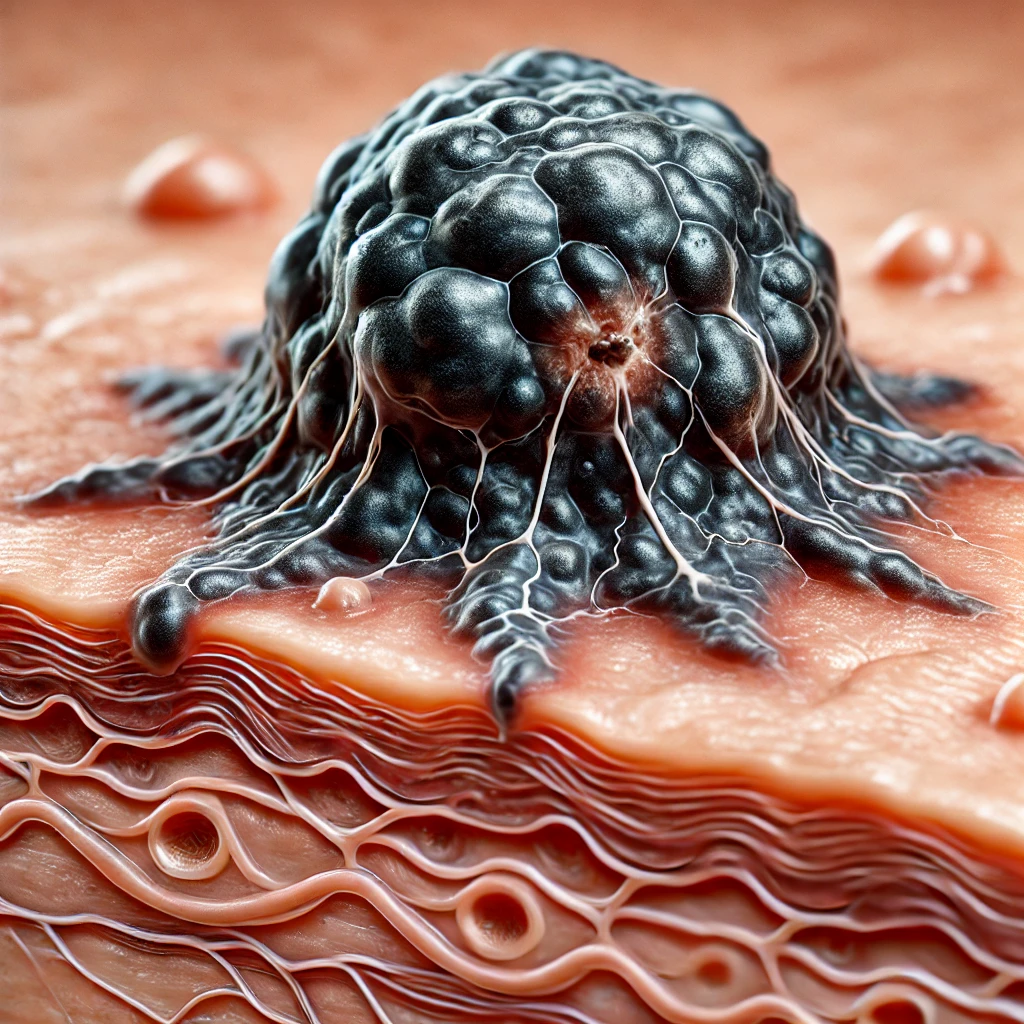How to prevent skin cancer:-Skin cancer is one of the most common types of cancer worldwide, affecting millions of people every year. This type of cancer arises from the skin’s cells when they begin to grow uncontrollably. It is important to understand the causes, symptoms, stages, treatments, and prevention methods to ensure early detection and successful treatment. In this article, we will explore skin cancer in detail, including how it develops, the symptoms you should look out for, the stages of the disease, potential complications, and how to prevent it.

What is Skin Cancer:-
Skin cancer occurs when skin cells undergo genetic mutations that cause them to multiply uncontrollably. These mutations often result from exposure to ultraviolet (UV) radiation, primarily from the sun, but can also be caused by artificial sources like tanning beds. The most common types of skin cancer include:
1. Basal Cell Carcinoma (BCC): This is the most common form of skin cancer. It develops in the basal cells of the skin, which are found at the bottom layer of the epidermis. BCC rarely spreads to other parts of the body but can cause significant damage to the surrounding tissue if not treated.
2. Squamous Cell Carcinoma (SCC): This type develops in the squamous cells, which make up most of the skin’s upper layers. SCC is more aggressive than BCC and can spread to other parts of the body if left untreated.
3. Melanoma: The most dangerous form of skin cancer, melanoma originates in the melanocytes, which are the cells that produce pigment in the skin. Melanoma is more likely to spread to other parts of the body and can be fatal if not treated in its early stages.
Early Symptoms of Skin Cancer
Skin cancer can manifest in various ways, depending on the type and stage. Early detection is crucial for effective treatment. Some common symptoms include:
– New Growths or Lesions: One of the first signs of skin cancer is the appearance of new growths or sores that do not heal. These growths may look like a pimple or a sore that bleeds and scabs but does not heal over time.
– Changes in Moles: If you notice any changes in the shape, size, color, or texture of an existing mole, it could be a sign of melanoma. The ABCDE rule is helpful in spotting potential melanomas:
– A for Asymmetry: One half of the mole does not match the other.
– B for Border: The edges are irregular or blurry.
– C for Color: The mole has uneven coloring or multiple colors.
– D for Diameter: The mole is larger than a pencil eraser.
– E for Evolving: The mole changes over time in size, shape, or color.
– Itching or Pain: Some skin cancers can cause itching, tenderness, or pain in the affected area.
Stages of Skin Cancer:-
Skin cancer is categorized into different stages, based on the size of the tumor and whether it has spread to other parts of the body.
1. Stage 0: Also called carcinoma in situ, this stage means the cancer is confined to the epidermis (the outermost layer of the skin) and has not spread deeper.
2. Stage I: The cancer has grown deeper into the skin but is still relatively small (usually less than 2 cm). It has not spread to nearby lymph nodes.
3. Stage II: The tumor is larger (more than 2 cm) but still has not spread to the lymph nodes or distant sites.
4. Stage III: The cancer has spread to nearby lymph nodes or tissues but not to distant organs.
5. Stage IV: In this stage, the cancer has metastasized, meaning it has spread to distant parts of the body, such as the lungs, liver, or brain. This is the most advanced stage and requires aggressive treatment.
Complications and Challenges:-
If not detected and treated early, skin cancer can lead to severe complications:
– Metastasis: The cancer can spread to other organs, particularly in the case of melanoma, which can metastasize to the lungs, liver, and brain.
– Disfigurement: Large tumors, particularly from BCC and SCC, can cause significant damage to the skin and underlying tissues, leading to scarring or disfigurement.
– Functional Impairment: Skin cancer that affects certain areas, such as the eyelids or nose, may interfere with the proper functioning of those parts of the body.
Treatments for Skin Cancer:-
Treatment for skin cancer depends on the type, stage, and location of the cancer. Common treatments include:
1. Surgical Removal: Most skin cancers, especially in their early stages, can be treated by surgically removing the tumor. The goal is to excise the cancerous tissue along with some surrounding healthy tissue to ensure no cancer cells are left behind.
2. Radiation Therapy: This treatment uses high-energy rays to target and kill cancer cells. It is often used when surgery is not an option or in cases of more advanced skin cancers.
3. Chemotherapy: While chemotherapy is not commonly used for skin cancer, it may be necessary for advanced stages, especially if the cancer has spread to other organs.
4. Immunotherapy: This treatment helps boost the immune system to fight cancer more effectively. It is particularly used for treating advanced melanoma.
5. Targeted Therapy: This involves drugs that specifically target certain genetic mutations in cancer cells. It is an option for advanced melanoma and other aggressive skin cancers.
Prevention of Skin Cancer
Prevention is always better than cure, and this holds true for skin cancer as well. Here are some key preventive measures:
– Avoid UV Exposure: The most effective way to prevent skin cancer is to limit your exposure to ultraviolet (UV) radiation. This means avoiding sunbathing, tanning beds, and prolonged exposure to direct sunlight, especially between 10 a.m. and 4 p.m., when UV rays are strongest.
– Use Sunscreen: Always use broad-spectrum sunscreen with an SPF of 30 or higher, even on cloudy days. Apply it generously to all exposed skin and reapply every two hours, especially after swimming or sweating.
– Wear Protective Clothing: Long-sleeved shirts, wide-brimmed hats, and sunglasses can protect your skin from harmful UV rays. Some clothing is specifically designed with UV protection in mind.
– Regular Skin Exams: Perform regular self-examinations to monitor any changes in your skin. See a dermatologist annually for a full-body skin check, especially if you are at higher risk due to factors like a family history of skin cancer or fair skin.
How to prevent skin cancer
Certain factors increase your risk of developing skin cancer, including:
– Fair Skin: People with lighter skin that burns easily are at higher risk because they have less melanin, which provides some protection against UV radiation.
– Family History: A family history of skin cancer, particularly melanoma, increases your risk.
– Excessive Sun Exposure: Frequent sun exposure or a history of sunburns can significantly raise your risk of skin cancer.
– Tanning Beds: The use of tanning beds is associated with a higher risk of both melanoma and non-melanoma skin cancers.
– Age: Skin cancer is more common in older adults, though melanoma is increasingly affecting younger people as well.
READ MORE-How to detect Hodgkin’s Lymphoma early

Conclusion
How to prevent skin cancer;-Skin cancer is a serious but preventable condition. By understanding the risk factors, symptoms, and treatment options, you can take proactive steps to protect yourself. Early detection is key to successful treatment, and preventive measures like avoiding excessive sun exposure, using sunscreen, and performing regular skin checks are essential. If you notice any suspicious changes in your skin, consult a dermatologist immediately. Taking these steps can help reduce your risk of skin cancer and ensure a healthier future.
